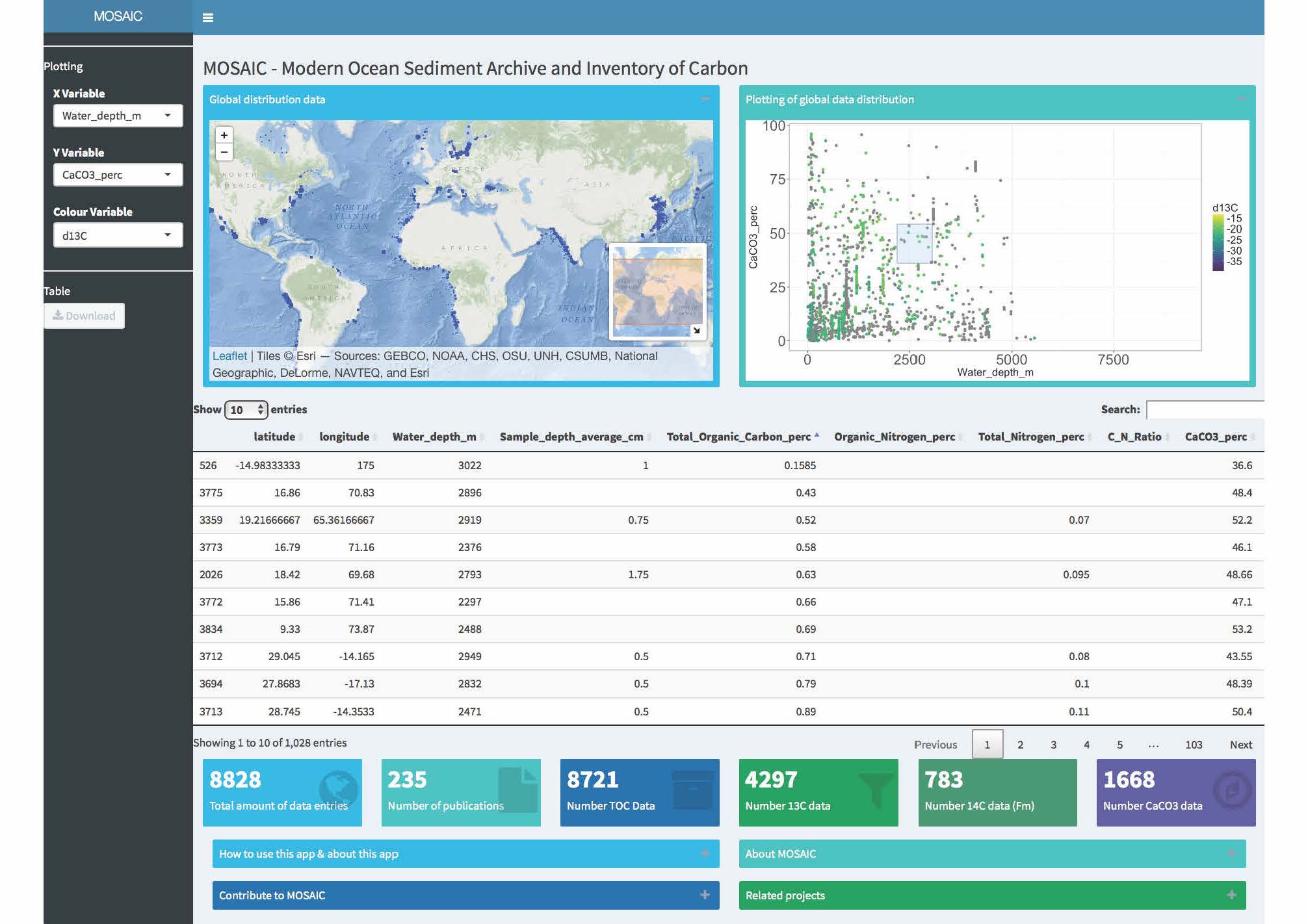MOSAIC
The interactive and intuitive website (mosaic.ethz.ch) allows both researchers and students to interact and explore spatial patterns of carbon signatures on the ocean floor.

Modern Ocean Sediment Archive and Inventory of Carbon
An organic geochemical and sedimentological database for marine surface sediments
Concept
Modern ocean sediments serve as the interface between the biosphere and the geosphere, play a key role in biogeochemical cycles and provide a window on how contemporary processes are written into the sedimentary record. Research over past decades has resulted in a wealth of information on the content and composition of organic matter in marine sediments, with ever-more sophisticated techniques continuing to yield information of greater detail and as an accelerating pace. However, there has been no attempt to synthesize this wealth of information. We are establishing a new database that incorporates information relevant to local, regional and global-scale assessment of the content, source and fate of organic materials accumulating in contemporary marine sediments. In the MOSAIC (Modern Ocean Sediment Archive and Inventory of Carbon) database, particular emphasis is placed on molecular and isotopic information, coupled with relevant contextual information (e.g., sedimentological properties) relevant to elucidating factors that influence the efficiency and nature of organic matter burial.
The main features of MOSAIC include:
- Emphasis on continental margin sediments as major loci of carbon burial, and as the interface between terrestrial and oceanic realms;
- Bulk to molecular-level organic geochemical properties and parameters, including concentration and isotopic compositions;
- Inclusion of extensive contextual data regarding the depositional setting, in particular with respect to sedimentological and redox characteristics.
Development
The database is structured in a way that users will be able to provide and recover data and contextual parameters. The procedure will involve data incorporation into pre-configured spreadsheets (tables) available on the MOSAIC website. Completed tables will be imported via the Structural Query Language (SQL) into MOSAIC. The data is visualized using an R Shiny Application.
This app was developed by Dr. Tessa van der Voort in the group of Prof. Tim Eglinton at the Department of Earth and Planetary Sciences at ETH Zurich.
The paper is in external page Earth System Science Data.
Contribute to MOSAIC
If you have ocean sediments data you want to contribute, fill out our external page excel form. And send it to .
Project members
- Tessa van der Voort
- Hannah Gies
- Sarah Paradis
